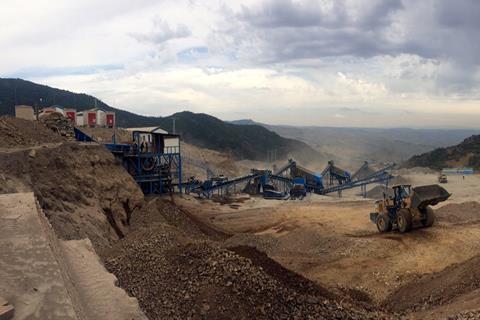Researchers have developed a new mining technique which uses microbes to recover metals and store carbon in the waste produced by mining. Adopting this technique of reusing mining waste, called tailings, could transform the mining industry and create a greener and more sustainable future.

Tailings are a by-product of mining. They are the fine-grained waste materials left after extracting the target ore mineral, which are then stacked and stored. This method is called dry-stack tailing.
Over time, mining practices have evolved and become more efficient. But the climate crisis and rising demand for critical minerals require the development of new ore removal and processing technologies.
Old tailings contain higher amounts of critical minerals that can be extracted with the help of microbes through a process called bioleaching. The microbes help break down the ore, releasing any valuable metals that weren’t fully recovered in an eco-friendly way that is much faster than natural biogeochemical weathering processes.
Resource recovery
“We can take tailings that were produced in the past and recover more resources from those waste materials and, in doing so, also reduce the risk of residual metals entering into local waterways or groundwater,” said Dr. Jenine McCutcheon, an assistant professor in the Department of Earth and Environmental Sciences at University of Waterloo.
In addition to improving resource recovery, the microbes capture carbon dioxide from the air and store it within the mine tailings as new minerals. This process aids in offsetting some of the emissions released while the mine was active and helps stabilize the tailings.
Microbial mineral carbonation could offset more than 30 per cent of a mine sites annual greenhouse gas emissions if applied to an entire mine. In addition, this microbial-driven technique gives value to historical mine tailings that are otherwise considered industrial waste.
Carbon neutral
“This technique makes better use of current and past mine sites,” McCutcheon said. “Rethinking how future mine sites are designed in order to integrate this process could result in mines that are carbon neutral from the get-go rather than thinking about carbon storage as an add-on at the end.
“This technology is a potential game-changer in the fight against climate change, and the mining industry has a unique opportunity to play a significant role in the future of green energy.”
McCutcheon further believes that the microbial-driven processes could help the industry move towards carbon-neutral or carbon-negative mining, but industry engagement is critical to move this technology towards large-scale deployment.
Dr. McCutcheon published this research with co-author and associate professor Ian Power of Trent University in the peer-reviewed journal PLOS Biology.







No comments yet